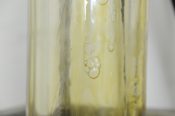Perhaps not quite yet a household name, but well on its way to becoming an accepted remedy within the health and wellness industry, CBD (technically known as cannabidiol) is a natural chemical compound found in the family of plants known more technically as Cannabaceae, or cannabis. Hemp, that sub-species of cannabis distinct from its more maligned cousin (marijuana), is the primary source for extracting CBD for oils, balms and other wellness products. Hemp CBD oil has earned every bit of its emerging reputation and promising ‘street cred’ as a therapeutic remedy for a variety of physical, and even psychological, ailments.

Hemp CBD oil is the derivative of a careful distillation process that extracts the life-promoting compounds of the hemp plant (cannabinoids) which contain less than .3% of the psychoactive component (tetrahydrocannabinol, or THC). This produces high quality CBD and cannabinoid-rich oils with only trace amounts of THC so that they can be used without a psychoactive response. When topically or sublingually delivered through a carrier substance, such as coconut oil, CBD is used to treat a variety of ailments including chronic pain, muscle spasms, and arthritis.[1]CBD has proven success in reducing nerve pain and inflammation, and may serve as an effective treatment for insomnia, seizures, depression, anxiety, and even acne.[2][3][4]Studies suggest that CBD may also be an effective treatment for high blood pressure and heart disease.[5]One of the most well-studied and promising areas of use for CBD oil is in the treatment of neurological disorders such as epilepsy, Parkinson’s disease, and multiple sclerosis[6][7]. Because of its anti-inflammatory properties, CBD may also prevent the neurological decline associated with Alzheimer’s disease. [8].
And that is just the beginning. Some studies have shown that CBD may have anti-cancer properties[1], and reduces the distressing symptoms associated with cancer and cancer treatment, including nausea, vomiting, and pain.[2][3]There is some evidence that CBD may also reduce the incidence of diabetes.[4]What this means is that CBD oil is not only useful for treating existing symptoms, but might also be used in disease prevention.
As our bodies naturally produce, and already use, cannabinoid molecules to regulate many functions, we are biologically receptive to the unique properties of plant-derived cannabinoids. As a result, hemp CBD oil merely delivers the natural fit-for-purpose medicinal properties of cannabinoids, and provides us all with opportunities to discover its therapeutic effects. Hemp’s existing reputation as a versatile and sustainable source of fiber may soon be eclipsed by the growing acknowledgement of the plants’ healing effects, and its more widespread acceptance as a legitimate treatment for a variety of ailments.
It is hard not to conclude that we are already hardwired for the natural remedies that Mother Nature has provided, and maybe even intended. Beyond chronic or acute pain management, the healing and restorative uses of hemp CBD oil are still being discovered as scientific research and innovation continue to unlock the power and potential of this incredible molecule. As it steadily reveals its unique benefits, borne out through decades of clinical trials and testimonials that have revealed the health benefits of this product, hemp CBD oil may soon be labeled a miracle drug of the future.
LifePatent is an innovative research company focused on unlocking the natural medicinal properties of hemp. We are dedicated to advancing the science behind the growth, extraction and application of hemp cannabinoids for healthier living. Our focus on quality control, 3rdparty analysis, and cGMP-compliant manufacturing standards ensures our hemp products are the most pure, effective, safe and consistent in the marketplace. For more information, visit us at LifePatent.com.

*These statements have not been evaluated by the Food and Drug Administration. LifePatent products are not intended to diagnose, treat, cure or prevent any disease.
[1]Shrivastava, A., Kuzontkoski, P. M., Groopman, J. E., & Prasad, A. (2011). Cannabidiol induces programmed cell death in breast cancer cells by coordinating cross-talk between apoptosis and autophagy. Molecular Cancer Therapeutics, 10(7), 1161-1172.
[2]Johnson, J. R., Burnell-Nugent, M., Lossignol, D., Ganae-Motan, E. D., Potts, R., & Fallon, M. T. (2010). Multicenter, double-blind, randomized, placebo-controlled, parallel-group study of the efficacy, safety, and tolerability of THC:CBD extract and THC extract in patients with intractable cancer-related pain. Journal of Pain Symptom Management, 39(2), 167-179.
[3]Bloechi-Daum, B., Deuson, R. R., Mavros, P., Hansen, M., & Herrstedt, J. (2006). Delayed nausea and vomiting continue to reduce patients’ quality of life after highly and moderately emetogenic chemotherapy despite antiemetic treatment. Journal of Clinical Oncology, 24(27), 4472-4478.
[4]Weiss, L., Zeira, M., Reich, S., Har-Noy, M., Mechoulam, R., Slavin, S., & Gallily, R. (2006). Cannabidiol lowers incidence of diabetes in non-obese diabetic mice.Autoimmunity,39(2), 143-151.
[1]Russo, E. B., & Hohmann, A. G. (2013). Role of cannabinoids in pain management. In T. R. Deer et al. (eds). Comprehensive Treatment of Chronic Pain by Medical, Interventional, and Integrative approaches (pp. 181-196).doi:10.1007/978-1-4614-1560-2_18
[2]Bergamaschi, M. M., Queiroz, R., Chagas, M. H. N., de Oliveira, D. C. G., De Martinis, B. S., Kapczinski, F., Quevedo, J., Roesler, R., Schroder, N., Nardi, A. E., Martin-Santos, R., Hallak, J. E. C., Zuardi, A. W., & Crippa, J. A. S. (2011). Cannabidiol reduces the anxiety induced by simulated public speaking in treatment-naïve social phobia patients. Neuropsychopharmacology, 36(6), 1219-1226.
[3]Shannon, S., & Opila-Lehman, J. (2016A). Effectiveness of cannabidiol oil for pediatric anxiety and insomnia as part of posttraumatic stress disorder: A case study. The Permanente Journal, 20(4), 108-111.
[4]Olah, A., Markovics, A., Szabo, P. T., Stott, C., Zouboulis, C. C., & Biro, T. Differential effectiveness of selected non-psychotropic phytocannabinoids on human sebocyte functions implicates their introduction in dry/seborrheic skin and acne treatment. Experimental Dermatology, 25(9), 701-707.
[5]Jadoon, K. A., Tan, G. D., & O’Sullivan, S. E. (2017). A single dose of cannabidiol reduces blood pressure in healthy volunteers in a randomized crossover study. JCI Insight, 2(12): e93760. doi: 10.1172/jci.insight.93760
[6]Russo, M., Calabro, R. S., Naro, A., Sessa, E. Rifici, C., D’Aleo, G., Leo, A., DeLuca, R., Quartarone, A., & Bramanti, P. (2015). Sativex in the management of multiple sclerosis-related spasticity: role of the corticospinal modulation. Neural Plasticity, 2015:656582. doi: 10.1155/2015/656582.
[7]Devinsky, O., Marsh, E., Friedman, D., Thiele, E., Laux, L., Sullivan, J., Miller, I., Flamini, R., Wilfong, A., Filloux, F., Wong, M., Tilton, N., Bruno, P., Bluvstein, J., Hedlund, J., Kamens, R., Maclean, J., Nangia,S., Singhal,N., Wilson, CA., Patel, A., & Cilio, M.R. (2016). Cannabidiol in patients with treatment-resistant epilepsy: an open-label interventional trial. Lancet Neurology, 15(3), 270-278.
[8]Watt, G., & Karl, T. (2017). In vivo Evidence for therapeutic properties of cannabidiol (CBD) for Alzheimer’s Disease. Frontiers in Pharmacology, 8(20). Doi: 10.3389/fphar.2017.00020
[9]Shrivastava, A., Kuzontkoski, P. M., Groopman, J. E., & Prasad, A. (2011). Cannabidiol induces programmed cell death in breast cancer cells by coordinating cross-talk between apoptosis and autophagy. Molecular Cancer Therapeutics, 10(7), 1161-1172.
[10]Johnson, J. R., Burnell-Nugent, M., Lossignol, D., Ganae-Motan, E. D., Potts, R., & Fallon, M. T. (2010). Multicenter, double-blind, randomized, placebo-controlled, parallel-group study of the efficacy, safety, and tolerability of THC:CBD extract and THC extract in patients with intractable cancer-related pain. Journal of Pain Symptom Management, 39(2), 167-179.
[11]Bloechi-Daum, B., Deuson, R. R., Mavros, P., Hansen, M., & Herrstedt, J. (2006). Delayed nausea and vomiting continue to reduce patients’ quality of life after highly and moderately emetogenic chemotherapy despite antiemetic treatment. Journal of Clinical Oncology, 24(27), 4472-4478.
[12]Weiss, L., Zeira, M., Reich, S., Har-Noy, M., Mechoulam, R., Slavin, S., & Gallily, R. (2006). Cannabidiol lowers incidence of diabetes in non-obese diabetic mice.Autoimmunity,39(2), 143-151.














